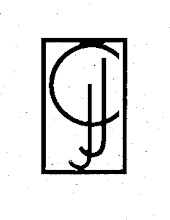 I’ve read a fair number of anthologies this past year. Some have been great reading, others just so-so. Yet regardless of the quality of writing, I’ve learned that a single editorial omission can really tick me off.
I’ve read a fair number of anthologies this past year. Some have been great reading, others just so-so. Yet regardless of the quality of writing, I’ve learned that a single editorial omission can really tick me off. The other night, while reading an anthology of dog stories, I stumbled on the very first page of one selection. The writer of the story, a woman, opened her contribution with a reference to her “wife.” Assuming that this was a true narrative as the others before it had been, I made the short leap of faith that the author was a lesbian. But soon, little clues were dropped to indicate that the narrator was a man.
I stopped reading and looked again at the short bio included in the back of the anthology. (Bios, I’ve learned, are a critical element of anthologies for me. They give insights about the writers and context for the story; they help me decide whether I want to read more of a writer’s work. I give a thumbs-down to anthologies that are bio-less. Also, I find it frustrating when anthologies that contain a mix of contemporary authors and those from previous centuries omit birth/death dates in the bios.) It gave me nothing.
Next, I put the book aside and searched the Internet for an explanation. Had the wrong author been cited with the story? Had a simple editorial mistake sent me on this hunt?
No, as it turned out. The story was, indeed, written by the woman whose name was published beneath the title in my anthology. The story had also been published previously in a journal or two, but (and it’s a BIG BUT) the story was FICTION! That is to say—because I think our society is often confused about the differences between FICTION and NONFICTION (Isn’t that right, James Frey, Mike Daisey, Jayson Blair?)—this story was NOT TRUE. It was a fabrication. The incident described in the story did not really happen; the people of the story were characters conjured in the author’s imagination.
The good news: I could finally stop puzzling over the story and just read it for its entertainment value.
The bad news: The editors of the anthology fell a notch or two on my admiration meter. Certainly this wasn’t the first anthology I’d read that mixed fact with fiction. I simply expected more of these particular editors.
For the record, I don’t oppose combining fact and fiction. I just want a heads-up about it. I want it clearly labeled—especially in a thematic anthology that may be read for reasons other than entertainment. Maybe it’s a book of surgeons’ life-and-death experiences, or mountain-climbers’ biggest challenges, or, as in the case of the anthology that got me kvetching in the first place, a book about the human-canine relationship. Readers should know whether they’re reading fact or fiction before they: 1) Try to replicate a situation described in the story; 2) Use information from the story to resolve a real-life problem; 3) Retell part of the story at a cocktail party; 4) Assume connections between the story and its author; and 5) Use parts of the story for educational purposes.
Oh dear. How I’ve gone on about this. I’ll stop now.
There is a silver lining in all this, though: I regard my reading as further instruction toward editorial mastery. I hope to one day curate my own animal-related anthology and when I do, I’ll have a long list of Dos and Don’ts to follow. I’m grateful to the editors who have pioneered the way before me.




No comments:
Post a Comment